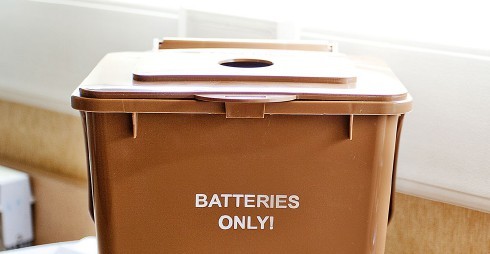

Don’t store them within the vicinity of any metal objects. While it may seem convenient to have all of your batteries or unwanted electronics in one location, they should never be kept directly next to each other, and especially not physically touching.

Perhaps you’re in an industry that uses lithium ion batteries, or maybe you’re simply storing end-of-life devices until they can be disposed of properly. Here are a few safety tactics to implement.
#LITHIUM BATTERY DISPOSAL HOW TO#
How to Handle & Dispose of Lithium Ion Batteries Safelyįortunately, there are preventive measures available to minimize the risk of battery-related fires and explosions. Moreover, lithium ion batteries can release hydrogen or static electricity over time, which can also contribute to explosions while being stored. For instance, if lithium batteries come into contact with other metals at a precise angle, it can cause sparks-which is why proper storage is so critical. Even if thermal runaway doesn’t take place, there are other hazards to consider. Improperly discarded batteries are believed to be the root cause of fires across many waste facilities. As a result, stability is lost, setting off an explosive process. The heat triggers a decomposition of the cell material, resulting in self-heating and an uncontrollable rise in temperature. This can provoke a state called thermal runaway, during which an area in the battery cell achieves an elevated temperature. The Risks of Improper Storage & Disposal of Lithium Ion Batteriesĭiscarding batteries along with the rest of your trash can cause jostling or punctures. Here’s what you should know about handling these batteries safely. In fact, even certain storage practices are hazardous. Yet, failure to take proper care when disposing of batteries presents serious risks. Once these devices have reached the end of their lifespan, most consumers throw them away with their regular trash. We envisage that this cost-effective and environment-friendly approach can be extended to other materials and promote the sustainability of LIB technologies.Single-use lithium ion batteries are found in many devices, including cellphones, laptops, and cameras. By virtue of the new process, high purity LiOH (99.90%) and FePO 4 (99.97%) have been obtained. Consequently, the consumption of chemicals is drastically minimized and secondary pollutants are eliminated. The reacted redox species are instantaneously regenerated on the electrode for subsequent rounds of reaction while Li + is separated from the counter electrode compartment. With 0.20 M 3− solution as a selective and regenerative redox mediator, LiFePO 4 is readily broken down into FePO 4 and Li + via the redox-targeting reaction between the redox mediator and the material, with a recycling efficiency for lithium removal up to 99.8% at room temperature. Here, we report an innovative approach in light of a redox targeting-based process and demonstrate the operation for the recycling of spent LiFePO 4. The state-of-the-art recycling technologies, which are generally based on chemical leaching methods, have critical issues like enormous consumption of chemicals and secondary pollution, and generally involve tedious procedures. With the retirement of a massive amount of end-of-life lithium ion batteries (LIBs), proper disposal of the hazardous wastes and cost-effective valorization of useful materials have become increasingly pressing and have attracted extensive attention worldwide.


 0 kommentar(er)
0 kommentar(er)
